Nicotine: The Lies You're Told

How Big Pharma Weaponized Your Fear of Nature's Nootropic
TL;DR
- The Big Lie Exposed: Nicotine itself isn't addictive—15 synthetic chemicals called pyrazines added to tobacco products are, while pure nicotine acts as a powerful therapeutic nutrient
- Long COVID solved in 6 days: Marco Leitzke's 2023 study showed 7mg nicotine patches eliminated 100% of long COVID symptoms in 6 days, with 50% improvement by day 3
- Hidden in plain sight: Tomatoes, eggplants, and potatoes all contain nicotine—omnivores, you've been dosing yourself daily without knowing it
- The regulatory conspiracy: FDA knew tobacco companies added 15 addictive chemicals while falsely labeling nicotine as the culprit, creating a $30+ billion pharmaceutical windfall
- Neurodegeneration reversal: Published studies show nicotine prevents and reverses Parkinson's, Alzheimer's, and multiple sclerosis through mitochondrial optimization
- The 2030 agenda: Five countries simultaneously announced bans on all nicotine products by 2030—right after evidence emerged of its antiviral properties
- Verification protocol: Functional labs can reveal your unique inflammatory markers, mitochondrial function, and detox pathways before implementing any nicotine strategy
You've already questioned the mainstream narratives. You've seen through their monetary deceptions. You've taken custody of your wealth precisely because you stopped trusting their institutions.
Now prepare to discover how deeply their medical deceptions run.
What if everything you've been told about nicotine was an orchestrated lie designed to protect a trillion-dollar pharmaceutical empire? What if the very substance demonized for decades actually holds keys to reversing neurodegeneration, eliminating long COVID, and optimizing mitochondrial function?
Dr. Bryan Ardis just blew the lid off one of the biggest medical cover-ups of our lifetime. In an explosive interview with Alex Clark on Culture Apothecary, this chiropractor-turned-medical detective revealed evidence so damning that it exposes not just scientific fraud, but racketeering at the highest levels of government.
The Harvard Bombshell That Changes Everything
The foundation of the nicotine deception cracked in 2016 when Harvard published research that should have made international headlines. After analyzing 7 million pages of FDA documents spanning back to the 1970s, Harvard researchers reached a stunning conclusion:
"Nicotine alone does not cause the addictive nature of tobacco products."
Let that sink in. The very substance blamed for tobacco addiction was scientifically given a pass. So what was causing the addiction? Fifteen synthetic chemicals called pyrazines—additives deliberately inserted by tobacco companies and approved by the FDA since 1970.
Dr. Ardis explained the scale of this deception:
"There's one nutrient called nicotine in tobacco products. There are 15 man-made addictive chemicals called pyrazines in every single one of them."
The FDA had evidence of this fraud for decades. They knew tobacco companies were spiking their products with addictive chemicals while nicotine took the blame. The FDA maintains a list of 599 man-made chemicals approved for addition to tobacco products. Of those 599, only 15 are the pyrazines responsible for addiction—meaning 584 other additives serve commercial purposes like flavoring and preservation, while just 15 create the behavioral dependency that generates billions in repeat sales.
Yet in 1994, they mandated warning labels stating "This product contains nicotine, an addictive substance"—a statement they knew was false. What detrimental effects, outside of addiction, the other additives cause smokers is a great question but better left for another discussion.
Your Daily Nicotine Dose: The Foods They Forgot to Warn You About
Here's where the deception becomes almost comical in its absurdity. While the FDA plasters addiction warnings on tobacco products containing nicotine, they've remained suspiciously silent about the nicotine in your kitchen.
According to Dr. Ardis, after tobacco, the plants with the highest nicotine content are:
- Eggplants (second highest)
- Tomatoes (third highest)
- White potatoes (fourth highest)
"You give them nicotine every day when you take them to Chick-fil-A and McDonald's and get them French fries and ketchup," Ardis noted. "That's two doses of nicotine every day. You are not afraid of nicotine. You just didn't know that you've been loading your kids up with nicotine every day."
If nicotine was truly this dangerous, addictive substance, wouldn't cauliflower–yes, it has some too–and tomatoes carry warning labels? The cognitive dissonance here shouldn't be dismissed.

To be fair, in contrast to the tobacco leaf itself, the content of the most nicked-out vegetables, is far less than what is generally concentrated into a cigarette, pouch, lozenge, gum or patch. Nonetheless, Ardis provides us ripe food for thought.
The Long COVID Cure They Don't Want You to Know
Perhaps the most explosive revelation centers on long COVID—a condition that has stumped mainstream medicine while generating billions in treatment revenue. In January 2023, researcher Marco Leitzke conducted a study that should have ended the long COVID crisis overnight.
The results were beyond remarkable:
- Day 3: 50% of all symptoms resolved
- Day 6: 100% symptom elimination
- Duration: Benefits persisted for years
"Every single long COVID patient and every symptom that persists for years is completely eradicated with a 7 milligram nicotine patch if you just wore one every day for 6 days," Dr. Ardis revealed.
Patients who had suffered for years with brain fog, loss of taste and smell, heart palpitations, and hypoxia found complete relief with a simple patch. Yet this research remains buried while Big Pharma continues developing expensive long COVID treatments.
🔬 PROOF OF WORK PROTOCOL
Your health deserves the same verification rigor you apply to your Bitcoin holdings. While they peddle one-size-fits-all solutions, functional labs reveal your unique inflammatory markers, mitochondrial efficiency, and detox pathways.
Before implementing any nicotine protocol, verify your baseline: methylation status, oxidative stress markers, autonomic balance, and detox pathway efficiency.
BITCOIN PAYMENTS: 50% DISCOUNT
The Neurodegeneration Reversal Protocol
The therapeutic applications of nicotine extend far beyond long COVID. Dr. Ardis detailed peer-reviewed research showing nicotine's remarkable effects on neurodegenerative diseases:
Parkinson's Disease: Medical News Today published an article titled "Can dietary nicotine reverse or prevent Parkinson's?" The answer appears to be yes. Epidemiological studies consistently show smokers have the lowest rates of Parkinson's development.
Alzheimer's Disease: Nicotine acts as a nootropic, literally turning the brain on. For patients struggling with dementia, word-finding difficulties, and memory loss, nicotine provides the acetylcholine boost needed for cognitive function.
Multiple Sclerosis: A 20-year Swedish study compared the general population to tobacco users. Researchers expected higher MS rates in tobacco users but found the opposite—the heaviest tobacco users had the lowest MS risk of all groups studied.
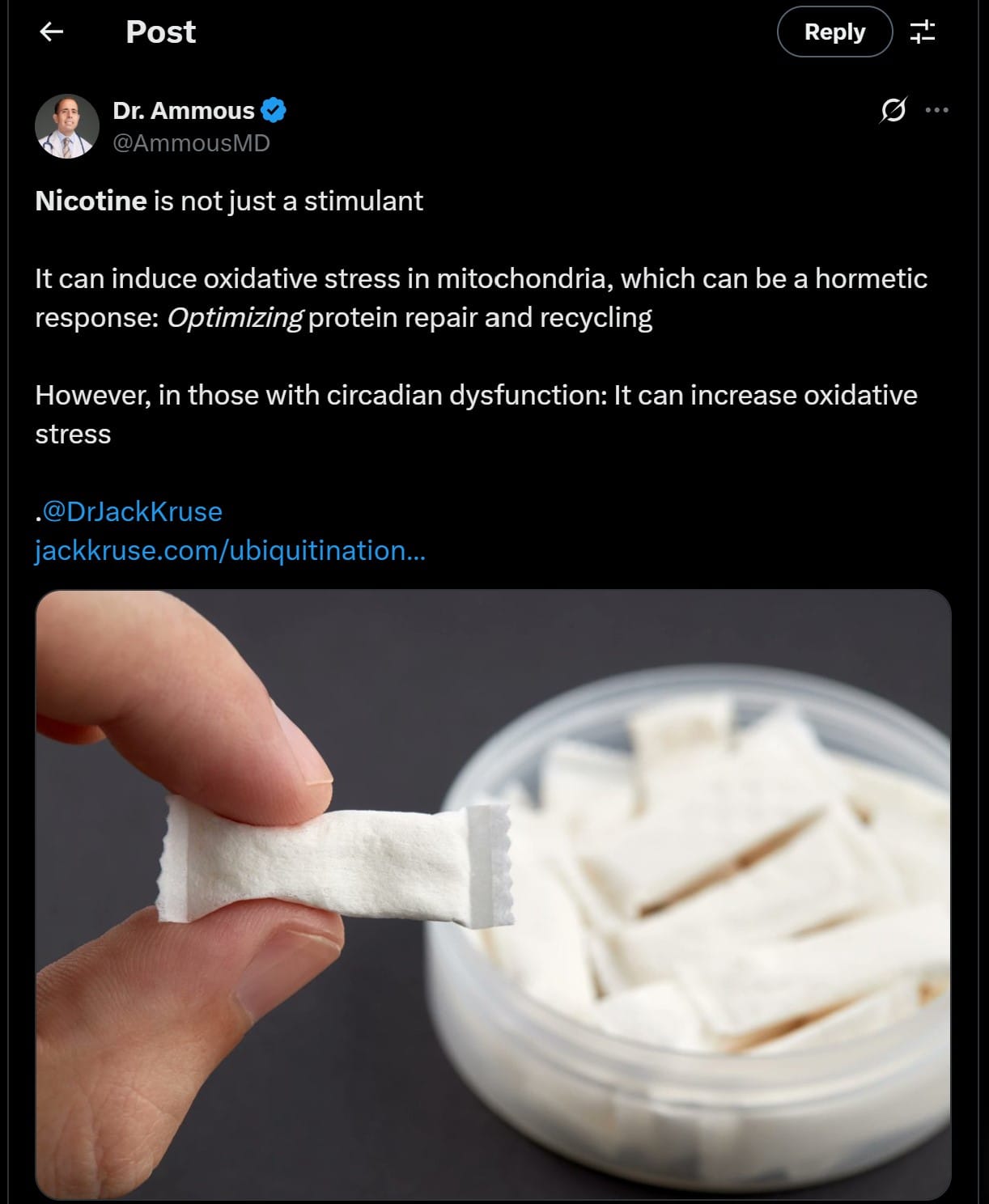
Dr. Ammous, on X (@AmmousMD) captured the nuanced reality: "Nicotine is not just a stimulant. It can induce oxidative stress in mitochondria, which can be a hormetic response: Optimizing protein repair and recycling. However, in those with circadian dysfunction: It can increase oxidative stress."
This observation perfectly sets up the mechanistic explanation provided by Dr. Jack Kruse. His research adds crucial context, explaining how nicotine enhances SIRT1 production—a key longevity pathway. As Kruse notes: "Nicotine seems to have the opposite effect by significantly increasing SIRT1... On a per unit basis you get more 'bulletproof' from nicotine gum than you do from any coffee."
His sly reference to health guru Dave Asprey's "Bulletproof Coffee" brand proves prescient—Asprey himself advocates strategic nicotine use, noting in his protocols:
"My longevity dose for nicotine as a protective agent is up to 5mg per day... if you don't want to get Alzheimer's and Parkinsons and you want to have really good dopamine function, there's an argument for low-dose nicotine." – Dave Asprey
The Mechanism: How Nicotine Actually Works in Your Body
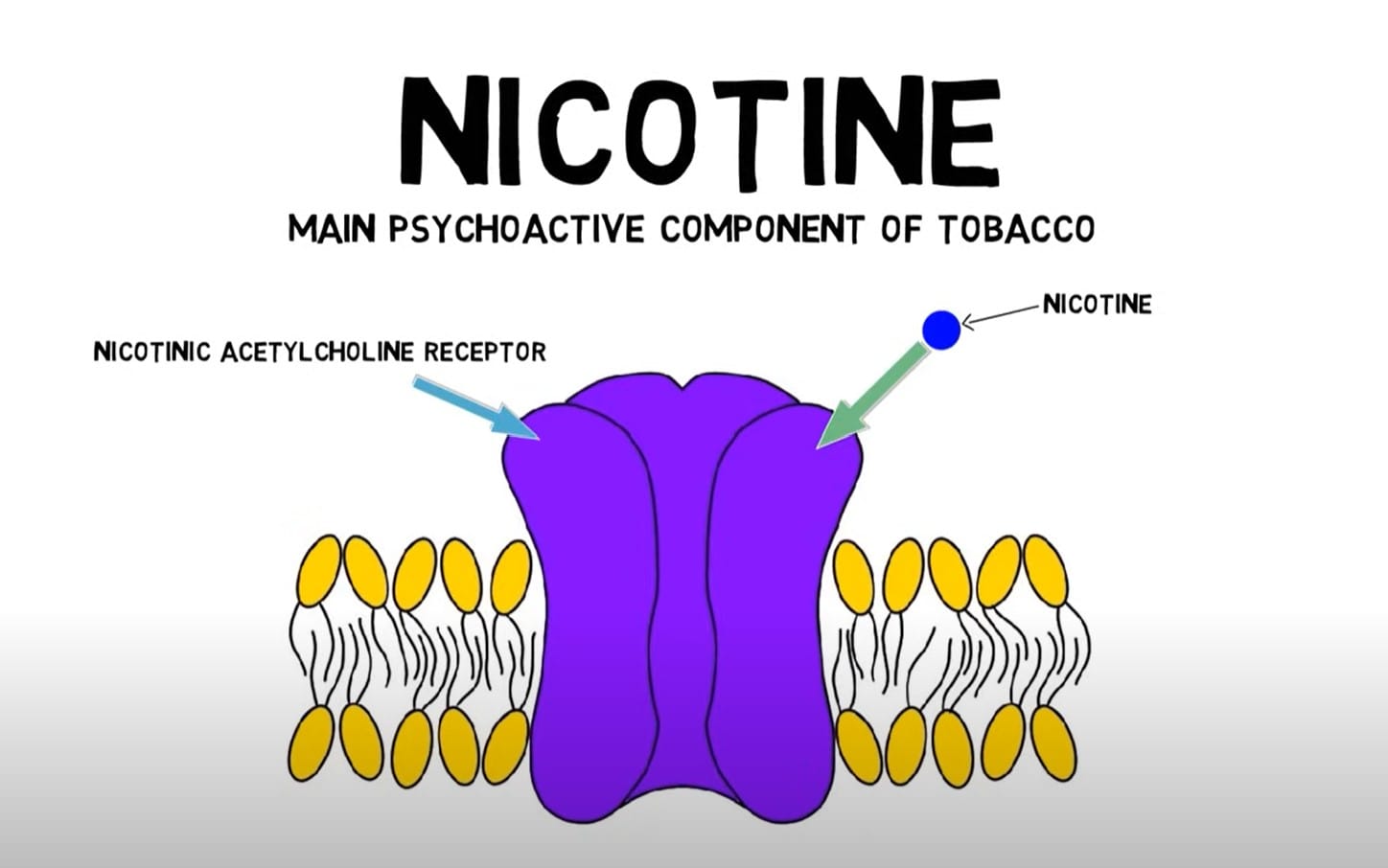
Before diving deeper into nicotine's therapeutic applications, understanding its basic mechanism of action helps explain why this single compound can address such diverse health conditions.
Nicotine functions as the main psychoactive component that activates nicotinic acetylcholine receptors throughout both your central and peripheral nervous systems. When nicotine binds to these receptors, it triggers neuronal depolarization and the subsequent release of multiple neurotransmitters—creating a cascade of biological effects.
The cognitive benefits stem from nicotine's ability to increase acetylcholine release, enhancing attention and mental clarity. Its mood-elevating and motivational effects result from increased dopamine levels in areas like the nucleus accumbens. The heightened focus and arousal many users report comes from elevated norepinephrine activity.
Beyond the brain, nicotine activates the peripheral nervous system, leading to increased sympathetic activity—explaining the slight elevation in heart rate and blood pressure some users experience. It also triggers catecholamine release (including dopamine and epinephrine) from the adrenal glands, further enhancing these effects.
Here's where the addiction story gets interesting: while nicotine initially activates these receptors, it subsequently causes them to become desensitized and less responsive. This creates tolerance, requiring higher doses for the same effect. As receptors become desensitized, the brain compensates by upregulating (adding more) acetylcholine receptors.
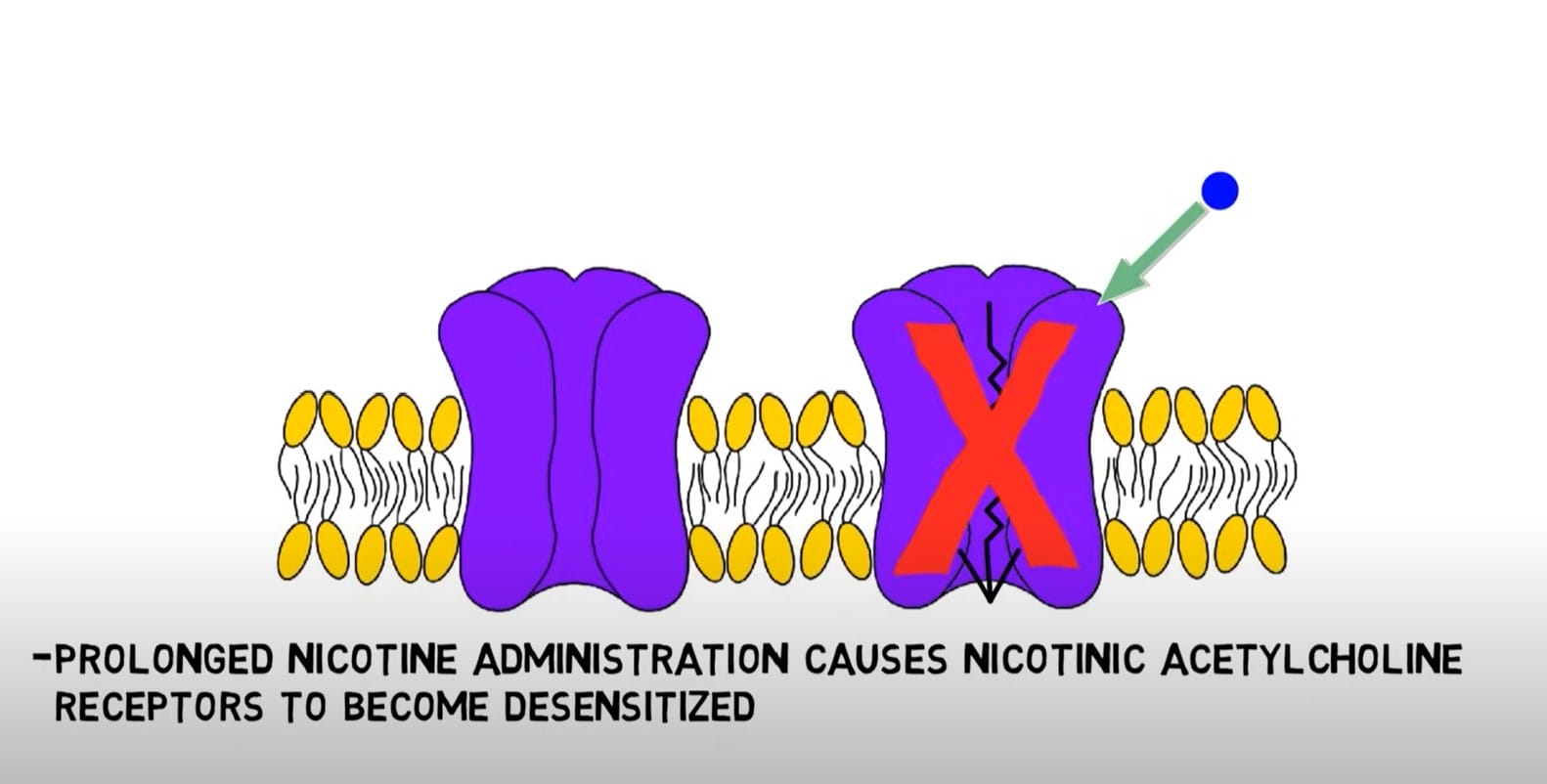
This receptor upregulation explains both withdrawal symptoms when stopping and why the addiction blame falls on nicotine—even though it's actually the synthetic pyrazines that hijack this natural adaptation process to create compulsive use patterns.
The Mitochondrial Connection: Why Nicotine Works
Dr. Jack Kruse's research, part of a larger discussion on our "eye-clock," provides the mechanistic explanation for nicotine's therapeutic effects. As noted earlier, his analysis reveals how nicotine dramatically increases sirtuins, specifically SIRT1 - a critical longevity pathway that regulates circadian gene expression, mitochondrial function and has a synergistic relationship with NAD.
This SIRT1 activation explains nicotine's wide-ranging benefits: improved protein recycling, enhanced mitochondrial biogenesis, and optimized cellular energy production. For those struggling with chronic fatigue, brain fog, or metabolic dysfunction, nicotine may provide the mitochondrial boost conventional medicine can't deliver.
The Anti-Aging Revolution: Nicotine's Metabolic Reprogramming
Recent research reveals nicotine's effects extend far beyond basic neurotransmitter modulation. According to analysis by Analyze & Optimize, on X (@Outdoctrination), "Nicotine reverses signs of aging by reprogramming metabolism" through mechanisms that address cellular energy production at its core.
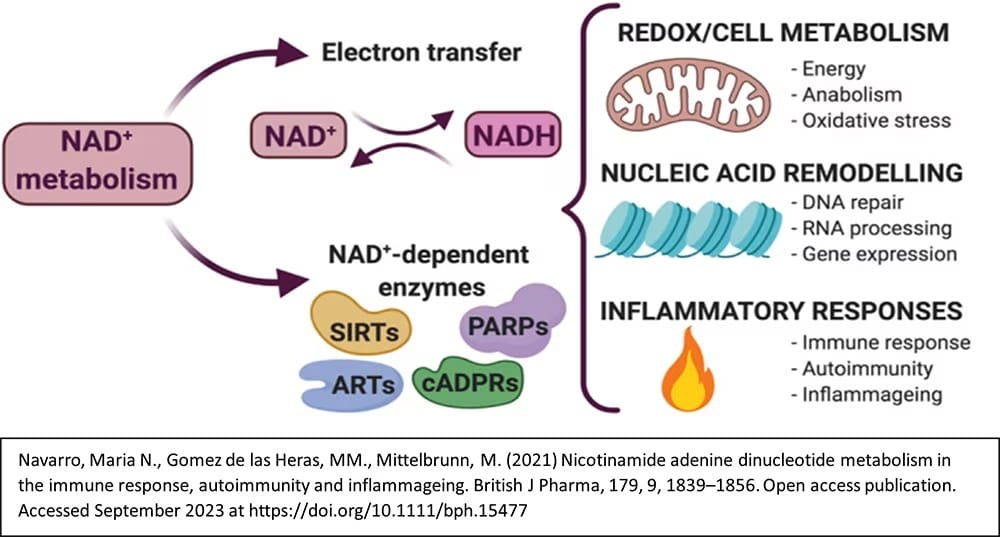
The key lies in NAD+ (nicotinamide adenine dinucleotide), an essential molecule involved in cellular metabolism that helps generate your cells' energy currency, ATP. As the account explains in a deep-dive thread: "The more NAD+ you have relative to NADH, the better your cells are at translating food energy into usable cellular energy... NAD+ is also important for activating certain enzymes involved in various protective processes, like antioxidant defenses and DNA repair."
Here's where nicotine becomes revolutionary: while aging decreases the NAD+-producing enzyme NAMPT in all tissues, nicotine administration (2.2mg daily human equivalent) increases it, "restoring its activity back to youthful levels in every tissue."
Brain protection represents another dimension. Nicotine increases expression of genes involved in brain cell growth and migration, including BDNF (brain-derived neurotrophic factor)—the brain's primary growth protein. Simultaneously, it decreases neuroinflammation markers, culminating in superior cognitive performance.
The antioxidant effects complete the picture: nicotine reduces oxidative stress markers while improving total antioxidant capacity and superoxide dismutase levels. It increases telomere protective proteins, guarding against DNA damage that accelerates aging.
As @Outdoctrination notes regarding dosage: "Nicotine again was only administered at around 2.2 mg (human equivalent) per day here, a pretty small amount." This aligns with therapeutic protocols that achieve dramatic results with minimal doses—far below recreational tobacco use levels.
The research suggests nicotine "initiates multiple molecular events that counteract the metabolic processes of aging," positioning it as a legitimate longevity intervention rather than merely a cognitive enhancer.
The Inflammation Solution
During his interview, Dr. Ardis underlined that nicotine's role goes beyond simple protection against neurodegeneration. Nicotine demonstrates powerful anti-inflammatory effects everywhere in the body: "Nicotine by itself as a nutrient has four times the amount of anti-inflammatory benefits than any singular inflammatory reaction."
This translates to real-world results for:
- Chronic migraines: Complete resolution within 48 hours
- Arthritis: Joint pain elimination when patches applied directly to affected areas
- Ulcerative colitis: Published research shows nicotine can cure this autoimmune condition
- Hypothyroidism: Symptom reversal in both men and women
- Autism spectrum disorders: Dr. Ardis noted that "nicotine's also proven to help reverse and improve all personality traits and actions of autistic children" with 7mg patches applied between the shoulder blades
The evidence is so compelling that oncologists in Spain and South America have begun using nicotine to treat various cancers, with Dr. Ardis noting that glioblastomas were "proven in 2021 to be cured by nicotine alone in 3 days." You heard him.
The 2030 Nicotine Prohibition: Protecting Future Pandemics
The timing of recent government actions reveals the true threat nicotine poses—not to public health, but to pandemic profitability. Within four weeks of Dr. Ardis releasing his "Watch the Water" documentary highlighting nicotine's antiviral properties, five countries made simultaneous announcements:
- United States: Joe Biden pledged to abolish all tobacco and nicotine products by 2030
- Canada: Trudeau announced identical restrictions
- New Zealand: Prime minister followed suit
- Australia: Joined the coordinated ban
- England: King Charles led the charge, banning tobacco sales to anyone born after January 1, 2009
Dr. Ardis connected the dots:
"Do you want to know why all the governments of the world were forced in unison to announce you are going to be banning all nicotine agents forever by the year 2030? Because they want to be able to keep pumping out vaccines."
The strategy is transparent: eliminate nicotine access before the next pandemic, ensuring maximum vaccine uptake when populations lack natural antiviral protection. Is it time to stock up on nicotine patches? Has it been time for a while?
[More on mRNA safety concerns... if you have the stomach.]
The Addiction Deception: Follow the Money
The financial incentives behind the nicotine deception become clear when you follow the money trail. Dr. Ardis explained how the FDA's false labeling of nicotine as addictive serves Big Pharma's interests:
"I think the FDA had to lie about nicotine because nicotine by 1994 was known to be a cure for these various chronic illnesses. The nutrient called nicotine, not the drug, the FDA called it a drug, it's actually a nutrient."
By maintaining nicotine's dangerous reputation, pharmaceutical companies protect massive revenue streams from neurodegeneration drugs, antidepressants, anti-inflammatories, ADHD medications, and countless other treatments that nicotine might replace at a fraction of the cost.
Natural vs. Synthetic: The Quality Question
Dr. Kruse's recent research for fellow Bitcoiner @BritishHODL revealed crucial distinctions between natural and manufactured nicotine sources. While chemically identical, Kruse explained: "Natural nicotine in tobacco may show minor spectral variations due to co-alkaloids... manufactured nicotine likely causes a more substantial increase (85–90% probability, 2–5x baseline) and faster mitochondrial decline due to the absence of protective alkaloids like mimosine or chlorogenic acid."
His conclusion: "Natural nicotine products would be a better choice," emphasizing the importance of co-factors that support rather than stress mitochondrial function.
X user Simmo (@yoursimmo) captured the practical wisdom around intentional nicotine use: "When used properly, nicotine is a sharp tool. But like any blade, if you don't respect it, it cuts you... High-T men don't chase a buzz. They use the tool when the mission demands it... not to fill a void."
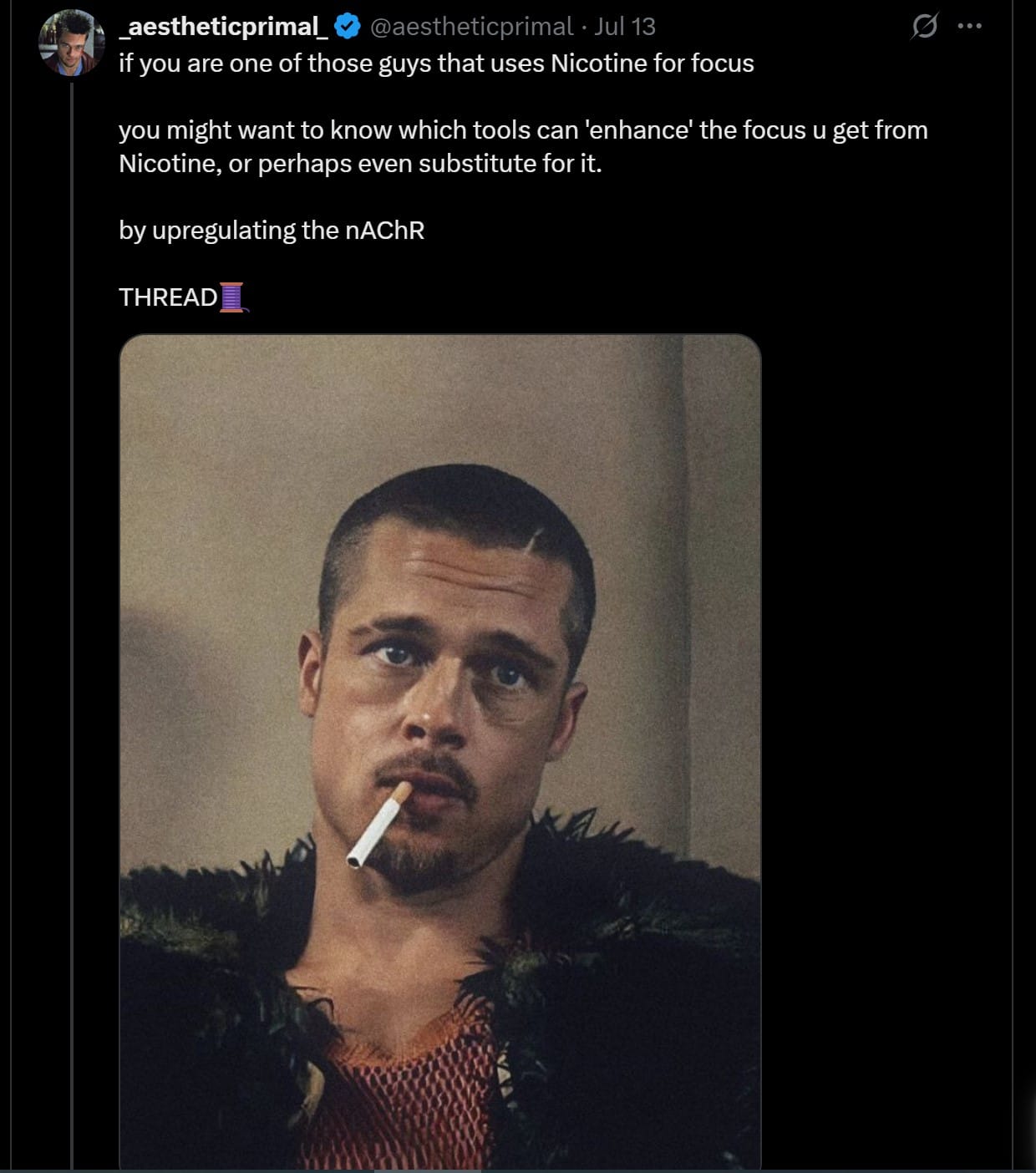
For those seeking enhanced cognitive benefits, @aestheticprimal outlined sophisticated stacking protocols. Ginkgo Biloba can extend nicotine's half-life by up to 50% through CYP2A6 enzyme inhibition, while simultaneously enhancing acetylcholine levels and brain blood flow. Royal Jelly provides 10-HDA, which "enhances availability of acetylcholine in the synaptic clefts," amplifying nicotine's cognitive effects naturally.
The Dosage Dilemma: Starting Safe
Despite nicotine's therapeutic potential, Dr. Ardis emphasizes the importance of proper dosing and gradual introduction. Commercial nicotine products deliver concentrated doses far exceeding food sources—a single cigarette contains about 1mg compared to trace amounts in vegetables.
Because nicotine patches are the only peer reviewed delivery system used in the studies he references, this form of nicotine supplementation is what he recommends. The brand he likes most, Rugby, is readily available on Amazon... for now. Patches release their dose over a 24-hour period, preventing unwanted side effects like nausea, diarrhea or headache, something I experienced experimenting with nicotine gum.
His recommended protocol for chronic illness uses gradual titration, the gold standard for supplement dosing among FDN practitioners like me, making it suitable for those using the nutrient as a performance enhancer or viral preventative:
- Week 1: 1mg nicotine (cut 7mg patches into smaller pieces or cut 2mg gum in half)
- Weeks 2-3: Gradually increase to 3mg
- Optimal therapeutic dose: 7mg patches for most conditions
- Application: Between shoulder blades for children, various locations for targeted effects
Yes. Giving nicotine to children is triggering to many. If you want to know more about the subject, better to let Ardis say it in his own words; watch the interview above.
🧬 RADICAL VERIFICATION
They manipulated your genome without consent. Now verify and repair the damage with tests they don't want you to see. Knowledge is power. Data is sovereignty.
While others chase symptoms, functional investigation reveals upstream dysfunction. From mitochondrial efficiency to methylation pathways—see how your unique biology responds to "therapeutic" interventions and what you can do about it.
BITCOIN PAYMENTS: 50% DISCOUNT
The Opposition Voices: What They Get Wrong
Not everyone embraces nicotine's therapeutic potential. Critics raise legitimate concerns about cardiovascular effects, addiction potential, and long-term consequences. PhD Rhonda Patrick's research highlights nicotine's effects on blood pressure and arterial health...
However, these concerns often conflate pure nicotine with tobacco smoke's 4,000+ compounds. IronSage (@IronSage_), on X, provided a balanced framework: "Nicotine is a miracle drug, but 99.9% of people use it wrong... When used thoughtfully, it can offer benefits such as: Supporting fat metabolism, enhancing digestion, boosting cognitive performance. The key lies in responsible use."
His comprehensive analysis covered nicotine's thermogenic effects, appetite suppression, and mitochondrial benefits while emphasizing safety protocols: "There's a blood pressure response to nicotine. It causes vasoconstriction, which increases blood pressure. To mitigate this, take: 1200mg of Hawthorn Berry, 1000mg of Citrulline, 1000mg of Arginine."
Dr. Stephen Cabral's YouTube analysis provides additional perspective, acknowledging benefits while noting individual variation: "About a third of the population would actually get detrimental effects from nicotine... you kind of need to know what part of that population you are in."
Your Health Stack Verification Protocol
Like Bitcoin's proof-of-work consensus, optimal health requires verification at every layer. You wouldn't trust an exchange's "trust me, bro" approach to custody your wealth—why trust conventional medicine's "trust me, bro" approach to your biology?
The Sleuth Wellness approach prioritizes functional verification:
- Mitochondrial function testing reveals energy production efficiency
- Inflammatory marker analysis identifies hidden systemic stress
- Neurotransmitter profiling guides nootropic interventions
- Autonomic balance assessment optimizes stress response
Whether exploring nicotine therapy or any intervention, data-driven decisions and which healthy habits you're stacking or ignoring, outperform protocol roulette every time.
The Binary Choice
We face a stark reality: medical freedom or pharmaceutical feudalism. Nicotine represents just one battle in a broader war for health sovereignty. The evidence for its therapeutic potential stands in direct opposition to regulatory narratives designed to protect pharmaceutical profits.
The infrastructure for medical tyranny already exists—captured regulatory agencies, compliant media, and profit-driven healthcare systems. Future interventions could eliminate choice entirely, regardless of individual consent.
Your defense requires the same approach that protects your Bitcoin: self-custody, verification, and refusal to trust third parties with your most valuable assets.
The evidence is clear. The choice is yours. The window is closing.
Stack your health like you stack your sats—with proof of work, not proof of authority.
Note: This newsletter is for educational purposes only and is not intended to diagnose, treat, or cure any medical condition. Always consult with qualified healthcare providers regarding any health concerns.